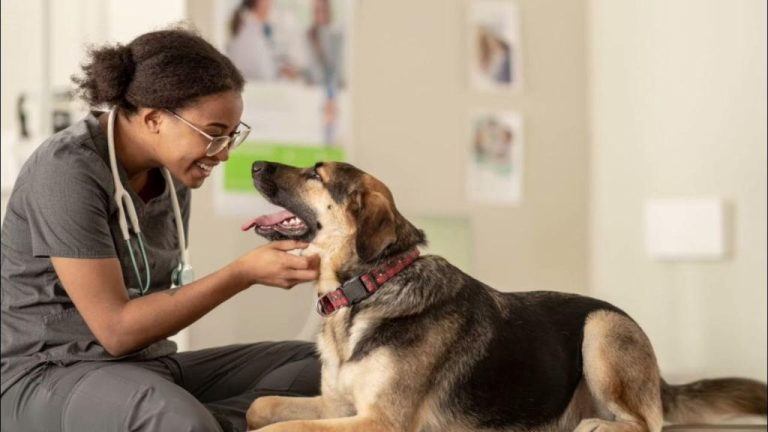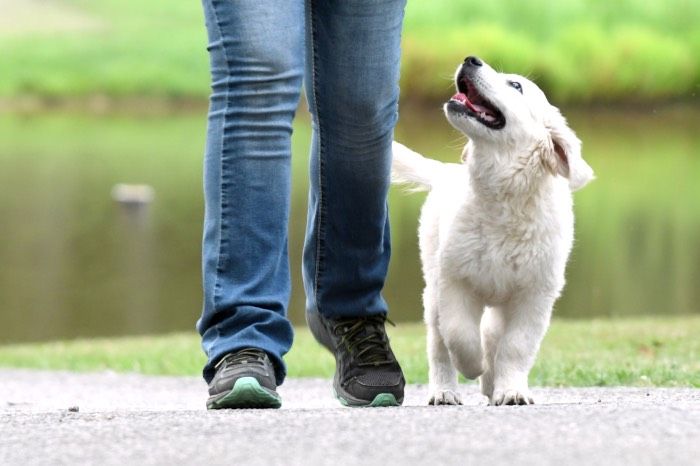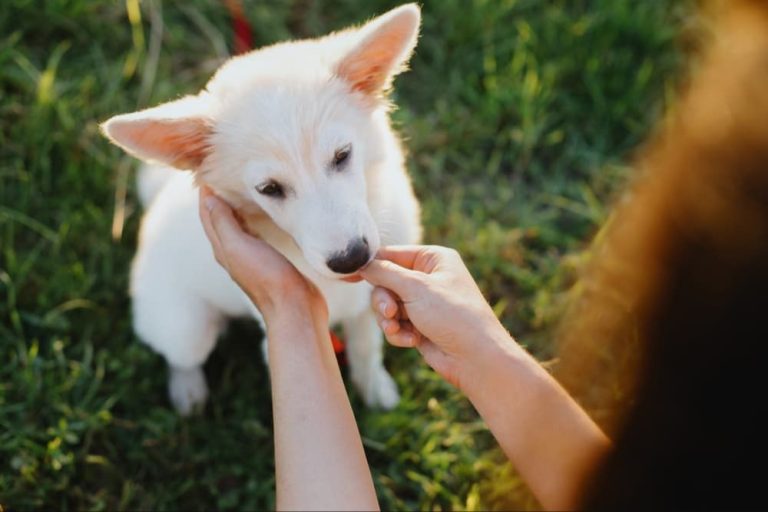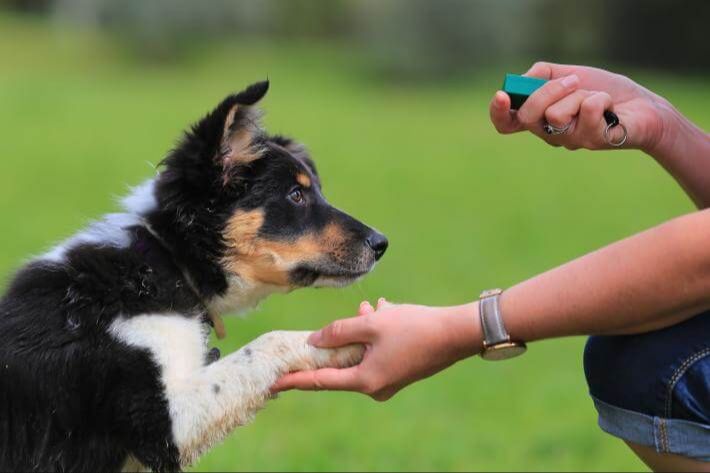Boundary Training: Establishing Limits For Your Dog
Boundary training refers to techniques that establish clear physical and behavioral limits for your dog. It teaches them where they can and cannot go, what objects are off limits, and how to respect personal space. Boundary training is a crucial part of ensuring your dog behaves appropriately indoors and outdoors.
For example, you can set physical boundaries like certain rooms or furniture that are off limits. Or you can set behavioral boundaries by training commands like “off” or “leave it” to restrict jumping, nipping, or begging. Proper boundary training promotes safety, order, and respect in your home.
This article will cover key aspects of boundary training like setting physical limits, teaching commands, restricting furniture access, and more. We’ll also discuss respecting a dog’s boundaries and their need for personal space. Following proper techniques will lead to a well-behaved companion who knows their place in the household.
Set Physical Boundaries
One of the first steps in establishing limits for a dog is setting clear physical boundaries in the home. This involves restricting your dog’s access to certain areas and giving them a safe space of their own. Here are some tips for establishing physical boundaries:
Use baby gates or exercise pens – Baby gates can block access to certain rooms or spaces. Similarly, an exercise pen gives your dog their own defined space for eating, sleeping and playing. These physical barriers can help reinforce training when your dog is alone. (source: https://www.cesarsway.com/5-tips-for-building-boundaries/)
Utilize crates – Crates not only provide security and fulfill a dog’s denning instinct, but they establish a physical boundary where you expect your dog to settle when not supervised. Gradually increase the time spent in the crate as your dog gains more freedom in the house. (source: https://shopkonos.com/blogs/the-bork-magazine/how-to-set-boundaries-for-your-dog-from-day-one)
Use Tethers – At first, keeping your dog on a short leash when inside can prevent access to off-limit areas. Like crates, as their training progresses, the tether can be removed for lengthening periods. This allows your dog to gradually earn more freedom. (source: https://www.cesarsway.com/5-tips-for-building-boundaries/)
Start small, and only expand access. As your dog demonstrates obedience, boundaries can be loosened. However, be patient and take it slowly. Preventing mistakes solidifies good habits for the long term. (source: https://shopkonos.com/blogs/the-bork-magazine/how-to-set-boundaries-for-your-dog-from-day-one)
Train the ‘Off’ Command
One of the most useful commands to teach a dog is the ‘off’ command. This command tells your dog to move off of furniture, away from doors or rooms, or simply to get down off you. According to The Spruce Pets, the best way to teach the ‘off’ command is through the use of treats and consistency in training [1].
Start by placing a treat in your hand and holding it above your dog’s nose. Say “off” and lure your dog off the furniture, ground, or away from you using the treat. Once all four paws are on the floor or ground, praise your dog and give the treat. Repeat this process multiple times over several training sessions until your dog starts to associate the command with the action of moving off or away.
Be patient and consistent with training. Use a firm tone when giving the command but praise enthusiastically when your dog complies. Over time, your dog will learn that ‘off’ means they need to stop what they are doing and move away. This command can then be used to restrict access to rooms, furniture, or jumping up on people. The ‘off’ command is an essential component of boundary training for dogs.
Restrict Access to Rooms
One of the most effective ways to keep your dog out of certain rooms is to physically block access. Baby gates work wonderfully for restricting dogs to certain areas of the home. Look for sturdy metal or wood gates that your dog can’t knock down or squeeze through. Install the gates completely across doorways leading to off-limit rooms.
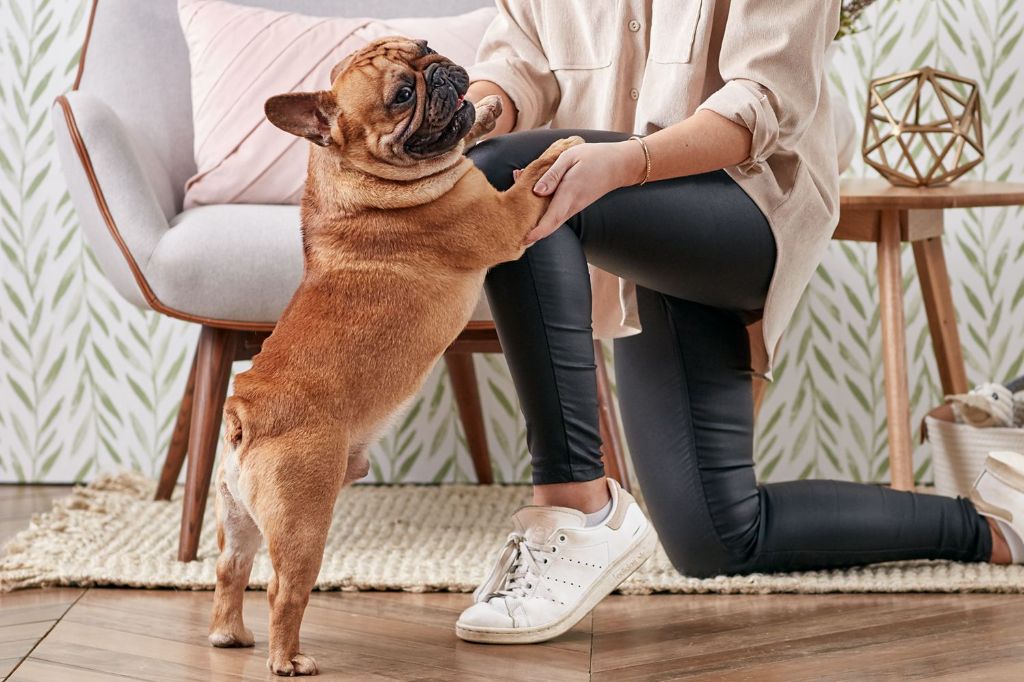
You can also keep doors closed to rooms you want to be off-limits. However, dogs are clever and may learn to open doors that aren’t latching properly. Consider installing slide bolt latches on doors above your dog’s reach to prevent them from nudging doors open.
Teaching your dog the ‘out’ command can also help reinforce that they should leave a room when told. Start by putting your dog on a leash and standing right outside a room you want to be off-limits. When your dog tries to enter, firmly say ‘out’ and lead them away with the leash. Reward with praise and treats when they leave the room. With consistency, your dog will learn to retreat from the room when you give the command.
While barriers physically stop your dog from entering, commands reinforce rules. Gates and doors combined with training verbal cues will be the most effective approach to restricting your dog’s access.
Set Boundaries with Furniture
Keeping your dog off furniture like couches, chairs, and beds is an important part of setting boundaries in your home. However, restricting access can be challenging, especially if your dog is persistent. Here are some effective techniques for keeping dogs off furniture:
Using repellents designed for pets can make furniture unappealing. There are sprays made with natural scents that dogs dislike, such as citrus or mint. Apply these sprays to furniture you want your dog to avoid. Reapply frequently at first, then as needed. You can also try furniture protectors with proprietary scents built in.
Restricting access prevents dogs from getting on furniture in the first place. Use baby gates in doorways or block access with chairs and furniture. Closing doors to rooms with off-limit furniture is also effective. Just make sure your dog has access to their own dog bed in allowed areas.
Training the ‘off’ command reinforces the boundary. Start by catching your dog on the furniture and use a firm ‘off’ command while pointing away. Praise and reward when they comply. With time and consistency, they will learn to get off immediately when told.
It is critical that everyone in the household enforces these techniques consistently. Dogs will be confused by mixed messages. Be patient – it can take time to break old furniture habits. But setting and enforcing these limits is an important part of maintaining a well-behaved dog.
Stop Counter Surfing
One frustrating behavior many dog owners deal with is counter surfing, where dogs steal food off counters and tables. This is a common problem, but can be stopped through proper training and management.
First, keep all food out of your dog’s reach by storing it in cabinets, drawers, or the refrigerator. Don’t leave any appetizing smells on the counters. You can also try placing mousetraps on the counter edges so they snap if your dog jumps up, or use a motion-activated compressed air deterrent to startle them (source).
For training, work on the ‘leave it’ command. Have your dog on a leash and place an appetizing treat on the counter. When they go for it, firmly tell them ‘leave it.’ Praise and reward with a treat from your hand when they resist. Be consistent and patient during this process. Over time, they will learn to avoid counter surfing when you give this command (source).
With diligence, you can break this habit. Keep your counters clean, put away all food, reprimand counter surfing behaviors, and reinforce ‘leave it’ for more paws-off counters.
Limit Jumping Up
Jumping up is a common behavior for dogs when they are excited to greet people. However, this can be an unwanted behavior, especially for small children or elderly people who may get knocked over. There are some effective strategies to discourage and limit jumping up:
Turn away when your dog jumps – If your dog jumps up on you when you walk in the door, immediately turn away so they get no attention. Once they are calm with all four paws on the floor, then pet them. This teaches them calm behavior is rewarded, not jumping.
Use your knee – Gently knee or bump your dog off when they jump up, just hard enough to discourage the behavior. Do not be overly forceful. Pair this with turning away to teach what is unwanted.
Ask guests to assist – Let guests know in advance not to pet or give attention if your dog jumps. Have them turn away or gently knee the dog off as well until calm behavior is displayed.
Reward calm greetings – When your dog greets someone calmly, reward them with attention, treats, and praise. This reinforces the behavior you want to see instead of jumping.
Consider leashing – Keep your dog on a leash when greeting people at first to limit access and jumping. Reward good behavior and correct unwanted jumping while on the leash so they learn.
With consistency, these techniques can help limit jumping up behaviors over time. The key is not to reward or give attention for jumping, and instead reward calm postures like sitting or standing politely. This communicates the right way to greet people to your dog.
Source: https://www.akc.org/expert-advice/training/stop-dog-jumping/
Discourage Territorial Marking
Territorial urine marking is a common issue, especially with unneutered male dogs. To curb indoor marking:
Get your dog spayed or neutered. Spaying/neutering can reduce marking behaviors by up to 80% in male dogs (source).
Use enzymatic cleaners to fully eliminate urine odors that may trigger marking (source). Soaking the area thoroughly allows the enzymes to break down the urine proteins.
Restrict access to vertical surfaces like walls and furniture legs which are common targets for marking. Close doors or use baby gates to limit access when you can’t directly supervise.
Address conflicts with new family members through gradual introductions. Marking often arises from anxiety, and introducing new pets slowly can prevent territorial disputes.
Respect the Dog’s Boundaries
It’s important to respect your dog’s boundaries just as you want them to respect yours. Pushing a dog past its limits with handling, rest, food or toys can lead to anxiety, fear, and even aggression. According to Respecting Dog Boundaries, “Children and dogs form amazing friendships when they understand each other.”
Give your dog space when resting or eating so they feel safe. If your dog growls or moves away when you try to pet them, take it as a sign they need more space. Provide places for your dog to be alone like a crate or bed. Rotate your dog’s toys to prevent possessive behavior. Let your dog walk away if they don’t want to be held or touched. Reading a dog’s body language helps avoid crossing their boundaries.
Establishing mutual trust and respect through boundary training creates a happier home. As The Dink Dog Mom explains, “If you teach them through punishment, they may learn to suppress their warning signals which can lead to a bite with no warning at all.” Setting clear limits while honoring your dog’s signals leads to a secure bond.
Conclusion
In summary, boundary training is an important part of raising a well-mannered and happy dog. By setting clear physical boundaries around the home and establishing commands like “off”, owners can restrict access to certain areas and prevent undesirable behaviors like jumping on furniture or counter surfing. This allows the dog to understand what spaces are their own and provides a sense of structure and routine.
Equally important is respecting the dog’s boundaries and not forcing interactions when the dog communicates they need space. This promotes trust between owner and dog. With consistency and positive reinforcement, boundary training allows dogs to coexist harmoniously with humans while getting the mental stimulation they need.
The benefits of thoughtful boundary training are immense. Owners gain peace of mind knowing their dog will stay within the yard and out of restricted areas in the home. Dogs gain confidence by having clear rules and expectations to follow. Overall, boundary training leads to lower stress, less territorial behavior, and improved obedience for a rewarding relationship between dogs and their owners.

